 Creepy
Creepy  Creepy
Creepy  Technology
Technology 10 Scientific Breakthroughs of 2025 That’ll Change Everything
 Our World
Our World 10 Ways Icelandic Culture Makes Other Countries Look Boring
 Misconceptions
Misconceptions 10 Common Misconceptions About the Victorian Era
 Mysteries
Mysteries 10 Strange Unexplained Mysteries of 2025
 Miscellaneous
Miscellaneous 10 of History’s Most Bell-Ringing Finishing Moves
 History
History 10 Great Escapes That Ended Right Back in Captivity
 Weird Stuff
Weird Stuff 10 Fascinating Things You Might Not Know About Spiders
 Food
Food 10 Everyday Foods You Didn’t Know Were Invented by the U.S. Military
 History
History 10 Odd Things Colonial Americans Kept at Home
 Creepy
Creepy 10 More Representations of Death from Myth, Legend, and Folktale
 Technology
Technology 10 Scientific Breakthroughs of 2025 That’ll Change Everything
 Our World
Our World 10 Ways Icelandic Culture Makes Other Countries Look Boring
Who's Behind Listverse?

Jamie Frater
Head Editor
Jamie founded Listverse due to an insatiable desire to share fascinating, obscure, and bizarre facts. He has been a guest speaker on numerous national radio and television stations and is a five time published author.
More About Us Misconceptions
Misconceptions 10 Common Misconceptions About the Victorian Era
 Mysteries
Mysteries 10 Strange Unexplained Mysteries of 2025
 Miscellaneous
Miscellaneous 10 of History’s Most Bell-Ringing Finishing Moves
 History
History 10 Great Escapes That Ended Right Back in Captivity
 Weird Stuff
Weird Stuff 10 Fascinating Things You Might Not Know About Spiders
 Food
Food 10 Everyday Foods You Didn’t Know Were Invented by the U.S. Military
 History
History 10 Odd Things Colonial Americans Kept at Home
10 Origins Of Sports Balls
The history of the balls used in various sports is rather gruesome. Players used pretty much whatever was available, including simple stitched-together cloth, inflated animal bladders, human heads, and animal and human skulls.[1]
Materials and technology have come a long way since ancient times, and the sports balls in use today reflect these changes. Compared to what we have now, the original balls used in sports are apt to strike us as nothing less than bizarre. Read on to see your favorite sports in a whole different light.
10 Baseball
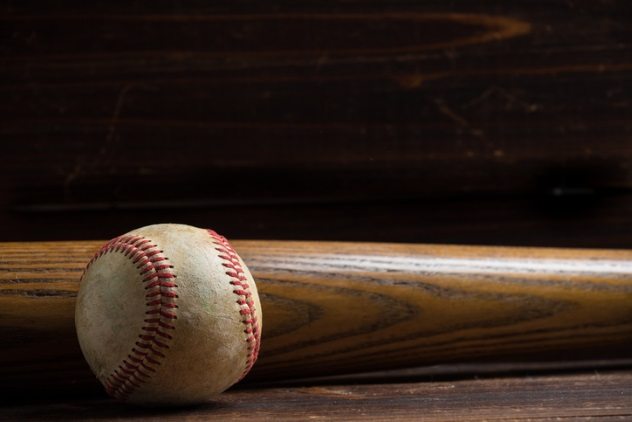
The baseball owes its origins to the efforts of a variety of enterprising individuals, including shoemakers, or cobblers, who made the balls from pieces of rubber shoes. In some cases, the first baseballs also had rubber cores. Wrapped in yarn, they were covered in leather. Other early baseballs were made of sturgeon eyes, rather than melted rubber. In the mid-1800s, pitchers sometimes made their own baseballs.
Regardless of who made them and of what they were made, early baseballs varied in size and weight. One of the most prominent “cover designs” for early baseballs was the “lemon peel,” in which “a single piece of leather [was] tied off with four distinct lines of stitching,” producing a lighter, softer ball that was two-thirds smaller than today’s standardized ball, which is 23 centimeters (9 in) in circumference. The early balls could be hit a greater distance and would bounce higher than their counterparts today.[2]
9 Basketball
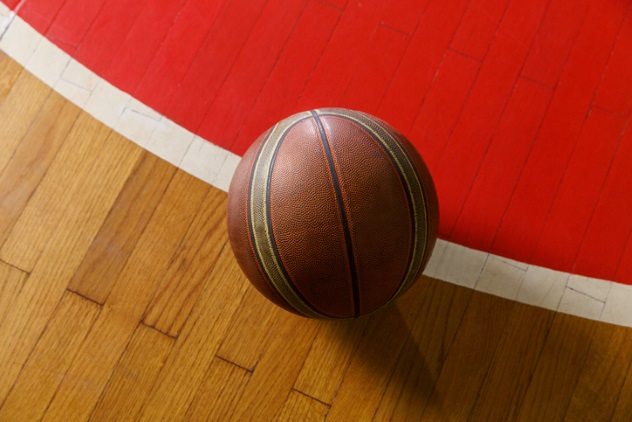
Originally, basketball was played with a soccer ball. It wasn’t until 1896, two years after the sport’s origin, that a bigger ball began to be used as the official ball for the game. It was made by the Overman Wheel Company, a bicycle manufacturer in Chicopee Falls, Massachusetts.
The circumference of the ball was established as 76 centimeters (30 in) minimum and 81 centimeters (32 in) maximum. In 1898, the weight of the ball was set at between 18 and 22 ounces. Except for slight changes in size and weight, the ball remains much the same today as it was in the late 19th century.[3]
8 Billiard Ball

Early billiard balls were made of the tusks of elephants killed for their ivory. Although of organic origin, ivory improves, rather than decays, with age. “Hard ivory” comes from long-dead elephants. Thousands of elephants were being slaughtered annually to provide the ivory needed to make the millions of billiard balls manufactured every year, and the animals soon become scarce, driving ivory prices up. The production of ivory billiard balls also presented challenges. The balls had to be stored at an “even temperature” for a week or so to prevent temperature fluctuations from cracking them. A search was undertaken to find a substitute material. A nut found in South America had less elasticity than ivory but otherwise had similar characteristics. However, it didn’t catch on as an ivory substitute.
To encourage inventors, a contest was held in 1863. Five years later, John Wesley Hyatt perfected celluloid, a material invented in 1851 by Alexander Parkes. Hyatt entered a celluloid billiard ball into the contest but failed to win the $10,000 prize. His ball bounced, but not high enough.
There was another problem with celluloid billiard balls. Sometimes, they exploded. Hyatt coated his billiard balls with a compound called collodion and sent them to billiard parlors to be tested, warning that the treated balls could catch fire if a “lighted cigar [were] applied to” them, since collodion was a flammable substance. Worse yet, the balls could actually explode if “any violent contact” occurred between them. A Colorado saloonkeeper who tested the collodion balls said he didn’t mind the mild explosions produced every time the balls hit each other, but they agitated his customers, causing every man present to draw his gun.[4]
7 Bowling Ball
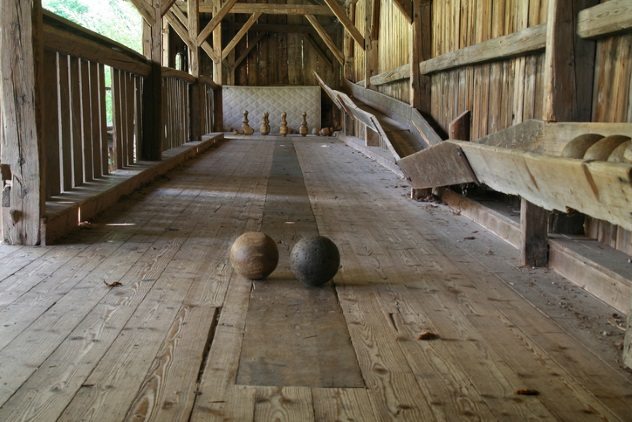
Although ancient Egyptians bowled as far back as 3200 BC, modern bowling started as a lawn game around 1840. Known as ninepins, it was a favorite among gamblers. By the time Connecticut banned ninepins in 1841 in an attempt to curb the vice, the game had moved indoors, and a tenth pin was added to get around the law against ninepins. During the early years of the 19th century, bowling balls were made of wood, a material later replaced by hard rubber.[5]
The first rubber ball, called “Evertrue,” was introduced in 1905, and in 1914, Brunswick Corporation made the Mineralite ball from a “mysterious rubber compound.” As a promotional gimmick, Mineralite balls were dispatched on a nationwide YMCA tour. Rubber balls emitted a nasty smell when drilled and lacked a “core design,” but, like polyester balls, they were widely used during the 1970s.
6 Dodgeball

The origin of dodgeball is uncertain. Although several sources claim the sport originated in Africa, where it was played over 200 years ago as a vicious blood sport, skeptics doubt the veracity of such claims, finding even more specious the assertion that, instead of the ball now used in the game, tribes originally threw rocks or “putrefied matter” at their opponents to injure or incapacitate them.
Once a player was injured, his opponents would throw more rocks or other missiles at him in a concerted effort to finish him, while the members of the injured player’s team would seek to protect him, fending off their opponents with their own rocks. Allegedly, the blood sport had a serious purpose: It was a training exercise designed to promote teamwork and hone fighting skills that would be used in intertribal skirmishes in which each side would seek to “take out the weak and protect their own.”
A missionary, Dr. James H. Carlisle, is said to have sought to introduce dodgeball to his European students, but they lacked the agility to dodge and the accuracy of aim needed to excel at the sport. It was only after his return to St. Mary’s College in Norfolk, England, that he succeeded in introducing the tamer version of the brutal blood sport known to us today, a leather ball replacing the rocks and putrefied matter that were originally used as the sport’s “balls.” Whether or not dodgeball originated as these sources indicate remains questionable, but it’s possible. If true, the original version of the sport makes football and soccer look tame, indeed.[6]
5 Football

Among the first footballs (aka soccer balls) were pigs’ heads and the skulls of English soldiers’ vanquished enemies, but the first “properly made ball” was an inflated pig’s bladder tied off at the end and enveloped in leather to make it more durable. The bladder football was more nearly round than a rugby ball, but it was by no means spherical. In England’s humid climate, the balls soon became waterlogged, doubling in weight, despite having been generously daubed with dubbin (a grease used to treat leather). Ramming such a ball could result in severe neck injuries.[7]
Charles Goodyear invented vulcanized rubber in 1836 and designed and manufactured the first vulcanized soccer balls in 1855. Seven years later, after his wife died of lung disease “reportedly from blowing up many hundreds of pigs’ bladders,” H.L. Lindon engineered one of the first inflatable rubber bladders for sports balls. In 1872, the English Football Association established the size and weight of soccer balls.
4 Golf Ball
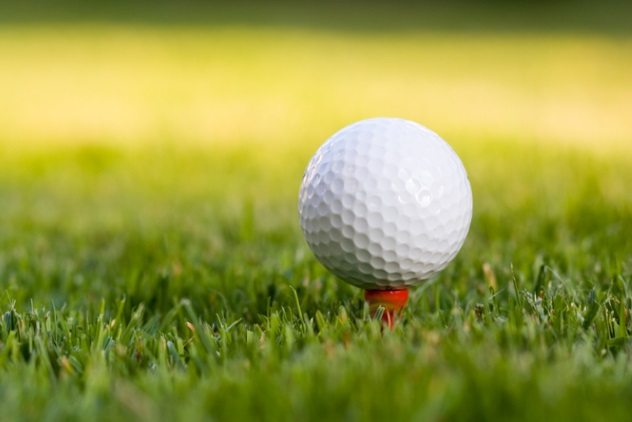
During its first four centuries, golf was played with as many as five types of balls: the wooden, the hairy, the feathery, the gutty, and the Haskell.
No hard evidence supports the use of wooden golf balls, although wooden balls were used in other games such as Colf, Crosse, and Mail, which are similar to golf. Such balls lacked “good handling properties” due to their smoothness and traveled only about 75 meters (246 ft).
The hairy, or common, ball originated in the Netherlands, from whence it was imported to Scotland from 1486 to 1618. Beginning in 1554, it began to be made in Scotland, and a dispute arose between Cannongate’s cordiners (leather workers and cobblers) in Edinburgh and the cordiners and gouff ball makers from North Leith. Hairies might be fashioned of straw or cow hair and manufactured in the same way, generally, as the feathery ball was made. Hairy golf balls were fairly expensive. From the 16th to the early 18th century, they sold for two to five shillings each, although they cost the earl of Montrose five shillings each in the early 17th century.
Cordiners used bird feathers swept from bird coops to make feathery, or featherie, golf balls, although no one knows when the practice, which may have originated in Scotland, first began. The feathery was made by stitching together “three pieces of [wet] leather,” turning the stitched pieces “inside out [and] leaving a ¼ inch slit through which [wet] feathers were pushed with the ‘brogue’ [a shoe of untanned leather] using the chest.” As they dried, “the feathers expanded and the leather shrank, creating a two way pressure and a tight ball with characteristics only recently matched by modern balls.” One source states two or three could be made per day, while another source claims as many as 50 to 60 per week could be made. The task was arduous, and those who performed it often died young. Depending on their quality, featheries sold between 2.5 and five shillings each. Since featheries were more firmly packed than hairies, they could be hit farther, up to 176 meters (579 ft), according to a “controlled test” conducted in Glasgow in 1786.
Starting in 1848, gutties (balls made of gutta-percha gum) began to replace featheries. The origin of gutties is unknown. Originally, it was smooth, but a St. Andrews saddlemaker added “regular grooves” to the ball’s exterior after golfers saw that nicked and blemished balls performed better. Gutties were cheaper and “more robust” than featheries, but they didn’t replace featheries until 1860, when they were regarded as of high enough quality and sufficient popularity to replace the feathery. The production of gutties accelerated after William Dunn of Musselburgh invented a mold for manufacturing them, and they began to sell for one shilling each, undercutting the price of the feathery they replaced. The gutty was replaced, in turn, by the Haskell.
In 1898, Coburn Haskell, an American, came up a “wound core ball.” The winding of the rubber threads that made up the ball’s core was mechanized. Around 1912, the bramble pattern of the ball’s covering was replaced with the dimple patterns that are familiar today. Since the Haskell, refinements to golf ball design have continued to be introduced.[8]
3 Ping-Pong Ball
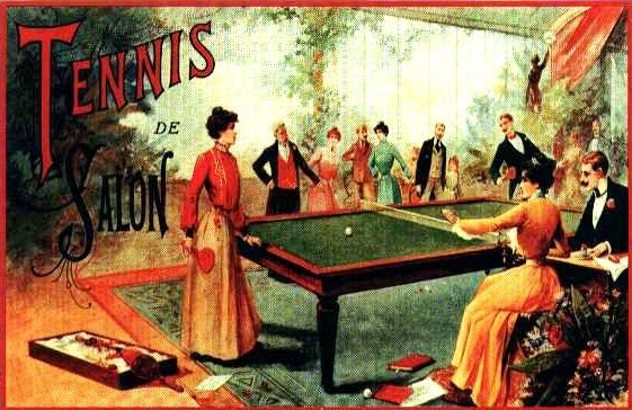
Ping-pong began as a miniaturized version of tennis, as middle-class Victorians used their dining room tables as miniature tennis courts. Books formed “nets.” Cigar box lids became “rackets,” later to be replaced by “parchment paper stretched around a frame.” Various items served as balls, including balls of string, champagne corks, and rubber balls.
Celluloid balls were adopted after James Good saw them in use in the United States during a trip there in 1901. Other innovations, such as paddles in lieu of cigar box lids, also improved the new game.[9]
2 Tennis Ball

Tennis dates to 12th-century Europe, if not to ancient Egypt. Before the familiar fuzzy rubber balls in use today, tennis balls were made of a variety of materials, including leather, chalk, moss, human hair, metal, sand, wool, or sheep guts.[10]
Hair and wool were the first officially sanctioned tennis ball fillers. In 1480, by decree of France’s King Louis XI, tennis balls had to consist of a leather cover stuffed with hair or wool. These fillers ensured the balls would bounce. Today, inflated rubber imparts more bounce to the ounce, but the “hair” still remains by virtue of the felted wool cover.
1 Volleyball
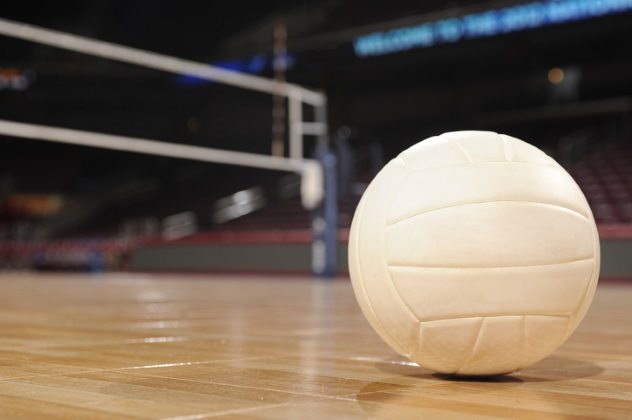
Created in 1895 by William G. Morgan of Massachusetts, volleyball combined aspects of baseball, basketball, tennis, and handball.[11] It required a new type of ball that could be kept in the air as it was batted over a net higher than those used in tennis or other sports. This meant the ball had to be light but also heavy enough to move fast.
Bladders adopted from basketball didn’t work, so Morgan turned to the A.G. Spaulding & Bros. factory near Chicopee, Massachusetts. Their response was a triple-layer ball: a latex bladder surrounded by cheesecloth inside an outer layer of leather. The ball worked well, and to this day, the basic design remains largely unchanged.
Leigh Paul enjoys reading and writing, but she’s not crazy about arithmetic.
Read more about the often bizarre history of sports on 10 Extreme Sports From History and 10 Bizarre Forgotten Sports From History.








